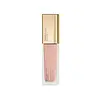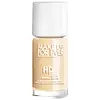BeautyAct ReNew Balm Serum Foundation Versus Make Up For Ever HD Skin Hydra Glow Hydrating Foundation
What's inside
What's inside
 Key Ingredients
Key Ingredients

 Benefits
Benefits

 Concerns
Concerns

 Ingredients Side-by-side
Ingredients Side-by-side

CI 77499
Cosmetic ColorantDextrin Palmitate
EmulsifyingHydrogen Dimethicone
Aluminum Hydroxide
EmollientTocopheryl Acetate
AntioxidantPentaerythrityl Tetra-Di-T-Butyl Hydroxyhydrocinnamate
AntioxidantCI 77491
Cosmetic ColorantAlcohol
AntimicrobialPotassium Sorbate
PreservativeSodium Dehydroacetate
PreservativeTetrasodium EDTA
Disodium Stearoyl Glutamate
CleansingLaureth-4
EmulsifyingCetyl PEG/PPG-10/1 Dimethicone
EmulsifyingDimethicone/Vinyl Dimethicone Crosspolymer
Skin ConditioningCI 77492
Cosmetic ColorantCI 77891
Cosmetic ColorantSynthetic Fluorphlogopite
Disteardimonium Hectorite
StabilisingMyristyl Alcohol
EmollientPolyglyceryl-4 Isostearate
EmulsifyingSodium Chloride
MaskingPhenoxyethanol
PreservativeDimethicone
EmollientIsododecane
EmollientPhenyl Trimethicone
Skin ConditioningButylene Glycol
HumectantIsohexadecane
EmollientCetearyl Ethylhexanoate
EmollientWater
Skin ConditioningGlycerin
HumectantCI 77499, Dextrin Palmitate, Hydrogen Dimethicone, Aluminum Hydroxide, Tocopheryl Acetate, Pentaerythrityl Tetra-Di-T-Butyl Hydroxyhydrocinnamate, CI 77491, Alcohol, Potassium Sorbate, Sodium Dehydroacetate, Tetrasodium EDTA, Disodium Stearoyl Glutamate, Laureth-4, Cetyl PEG/PPG-10/1 Dimethicone, Dimethicone/Vinyl Dimethicone Crosspolymer, CI 77492, CI 77891, Synthetic Fluorphlogopite, Disteardimonium Hectorite, Myristyl Alcohol, Polyglyceryl-4 Isostearate, Sodium Chloride, Phenoxyethanol, Dimethicone, Isododecane, Phenyl Trimethicone, Butylene Glycol, Isohexadecane, Cetearyl Ethylhexanoate, Water, Glycerin
Water
Skin ConditioningCitrus Limon Fruit Extract
MaskingDicaprylyl Carbonate
EmollientPolyglyceryl-2 Dipolyhydroxystearate
Skin ConditioningC13-15 Alkane
SolventIsododecane
EmollientPropanediol
SolventGlycerin
HumectantPolyglyceryl-3 Diisostearate
EmulsifyingPentylene Glycol
Skin ConditioningHeptyl Undecylenate
EmollientSynthetic Fluorphlogopite
Simmondsia Chinensis Seed Oil
EmollientSodium Chloride
MaskingC18-21 Alkane
SolventStearalkonium Hectorite
Gel FormingUndecane
EmollientCocos Nucifera Fruit Extract
EmollientTridecane
PerfumingPersea Gratissima Oil
Skin ConditioningTocopheryl Acetate
AntioxidantDimethicone/Vinyl Dimethicone Crosspolymer
Skin ConditioningSodium Dehydroacetate
PreservativePropylene Carbonate
SolventTriethoxysilylethyl Polydimethylsiloxyethyl Hexyl Dimethicone
Skin ConditioningParfum
MaskingSodium Phytate
Citric Acid
BufferingHydrogen Dimethicone
Sodium Hydroxide
BufferingAlgin
MaskingGalactoarabinan
Levulinic Acid
PerfumingSodium Hyaluronate
HumectantPotassium Sorbate
PreservativeSodium Levulinate
Skin ConditioningTocopherol
AntioxidantMaltodextrin
AbsorbentBiosaccharide Gum-1
HumectantCI 77891
Cosmetic ColorantCI 77491
Cosmetic ColorantCI 77492
Cosmetic ColorantCI 77499
Cosmetic ColorantWater, Citrus Limon Fruit Extract, Dicaprylyl Carbonate, Polyglyceryl-2 Dipolyhydroxystearate, C13-15 Alkane, Isododecane, Propanediol, Glycerin, Polyglyceryl-3 Diisostearate, Pentylene Glycol, Heptyl Undecylenate, Synthetic Fluorphlogopite, Simmondsia Chinensis Seed Oil, Sodium Chloride, C18-21 Alkane, Stearalkonium Hectorite, Undecane, Cocos Nucifera Fruit Extract, Tridecane, Persea Gratissima Oil, Tocopheryl Acetate, Dimethicone/Vinyl Dimethicone Crosspolymer, Sodium Dehydroacetate, Propylene Carbonate, Triethoxysilylethyl Polydimethylsiloxyethyl Hexyl Dimethicone, Parfum, Sodium Phytate, Citric Acid, Hydrogen Dimethicone, Sodium Hydroxide, Algin, Galactoarabinan, Levulinic Acid, Sodium Hyaluronate, Potassium Sorbate, Sodium Levulinate, Tocopherol, Maltodextrin, Biosaccharide Gum-1, CI 77891, CI 77491, CI 77492, CI 77499
Ingredients Explained
These ingredients are found in both products.
Ingredients higher up in an ingredient list are typically present in a larger amount.
Ci 77491 is also hydrated iron III oxide. It's sole purpose is to give a red/pink hue to products.
Iron III oxides are classified as inorganic chemicals for coloring.
Synthetically created Ci 77491 is considered safer than those naturally found. This is because the synthetically created version may contain less impurities. Iron oxides are generally non-toxic and non-allergenic.
Learn more about CI 77491Ci 77492 is also hydrated iron III oxide. It's sole purpose is to give a yellow hue to products.
Iron III oxides are classified as inorganic chemicals for coloring.
Synthetically created Ci 77492 is considered safer than those naturally found. This is because the synthetically created version may contain less impurities. Iron oxides are generally non-toxic and non-allergenic.
Learn more about CI 77492Ci 77499 is also hydrated iron III oxide. It is created from mixing red and black iron oxides. This helps give shades of darkness to a product.
Iron III oxides are classified as inorganic chemicals for coloring.
Ci 77891 is a white pigment from Titanium dioxide. It is naturally found in minerals such as rutile and ilmenite.
It's main function is to add a white color to cosmetics. It can also be mixed with other colors to create different shades.
Ci 77891 is commonly found in sunscreens due to its ability to block UV rays.
Learn more about CI 77891This ingredient is a silicone used to improve the texture of products and absorb oil. It does not get absorbed into the skin.
Like other silicones, Dimethicone/Vinyl Dimethicone Crosspolymer helps condition the skin by creating a barrier. In this sense, it can act as an emollient and trap moisture in.
This ingredient is a type of elastomer.
Learn more about Dimethicone/Vinyl Dimethicone CrosspolymerGlycerin is already naturally found in your skin. It helps moisturize and protect your skin.
A study from 2016 found glycerin to be more effective as a humectant than AHAs and hyaluronic acid.
As a humectant, it helps the skin stay hydrated by pulling moisture to your skin. The low molecular weight of glycerin allows it to pull moisture into the deeper layers of your skin.
Hydrated skin improves your skin barrier; Your skin barrier helps protect against irritants and bacteria.
Glycerin has also been found to have antimicrobial and antiviral properties. Due to these properties, glycerin is often used in wound and burn treatments.
In cosmetics, glycerin is usually derived from plants such as soybean or palm. However, it can also be sourced from animals, such as tallow or animal fat.
This ingredient is organic, colorless, odorless, and non-toxic.
Glycerin is the name for this ingredient in American English. British English uses Glycerol/Glycerine.
Learn more about GlycerinHydrogen Dimethicone is a type of silicone.
Isododecane is a fragrance, emollient, and solvent.
As an emollient, it helps your skin stay soft and hydrated. Emollients help trap moisture into your skin.
Isododecane's role as a solvent makes it a great texture enhancer. It spreads smoothly on skin and does not leave a sticky feeling behind. Isododecane also helps prevent color transfer in makeup products.
Isododecane is not absorbed into skin.
Learn more about IsododecanePotassium Sorbate is a preservative used to prevent yeast and mold in products. It is commonly found in both cosmetic and food products.
This ingredient comes from potassium salt derived from sorbic acid. Sorbic acid is a natural antibiotic and effective against fungus.
Both potassium sorbate and sorbic acid can be found in baked goods, cheeses, dried meats, dried fruit, ice cream, pickles, wine, yogurt, and more.
You'll often find this ingredient used with other preservatives.
Learn more about Potassium SorbateChances are, you eat sodium chloride every day. Sodium Chloride is also known as table salt.
This ingredient has many purposes in skincare: thickener, emulsifier, and exfoliator.
You'll most likely find this ingredient in cleansers where it is used to create a gel-like texture. As an emulsifier, it also prevents ingredients from separating.
There is much debate on whether this ingredient is comedogenic. The short answer - comedogenic ratings don't tell the whole story. Learn more about comegodenic ratings here.
The concensus about this ingredient causing acne seems to be divided. Research is needed to understand if this ingredient does cause acne.
Scrubs may use salt as the primary exfoliating ingredient.
Learn more about Sodium ChlorideThis ingredient is a preservative with antimicrobial properties. It is the sodium salt of dehydroacetic acid.
It is especially effective at preventing bacterial and fungal growth in low concentrations.
Synthetic Fluorphlogopite is the synthethic version of mica. It consists of fluorine, aluminum and silicate.
Synthetic Fluorphlogopite is used to add volume to products.
It is considered non-irritating on the skin.
Learn more about Synthetic FluorphlogopiteTocopheryl Acetate is AKA Vitamin E. It is an antioxidant and protects your skin from free radicals. Free radicals damage the skin by breaking down collagen.
One study found using Tocopheryl Acetate with Vitamin C decreased the number of sunburned cells.
Tocopheryl Acetate is commonly found in both skincare and dietary supplements.
Learn more about Tocopheryl AcetateWater. It's the most common cosmetic ingredient of all. You'll usually see it at the top of ingredient lists, meaning that it makes up the largest part of the product.
So why is it so popular? Water most often acts as a solvent - this means that it helps dissolve other ingredients into the formulation.
You'll also recognize water as that liquid we all need to stay alive. If you see this, drink a glass of water. Stay hydrated!
Learn more about Water